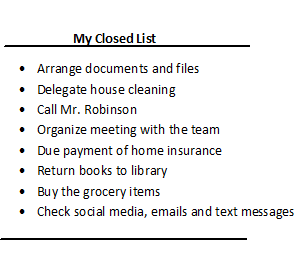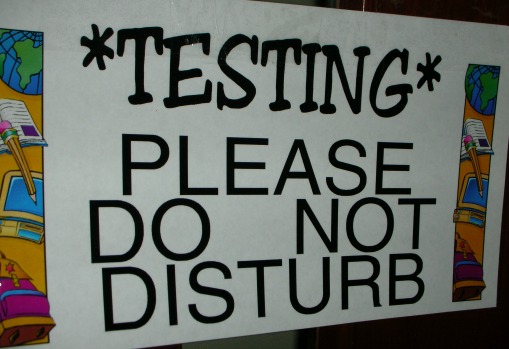|
|
Using A Closed List
To Complete With Assurance
A closed list can help you finish and complete a set of tasks that may be hard to manage when using an ordinary list.
Even if an ordinary list uses a “priority sequence” of tasks, you may still feel unfulfilled when a lot of tasks are not completed and others left behind. This is where the difference of using this customized list makes completing your tasks with more assurance.
So What is a Closed List?
A closed-list is like a to-do list, but has a “limit.”
The main difference from an ordinary to-do list and a closed one is that you cannot add more tasks or activities to the list. Therefore, you’ll be concentrating on the limited amount of tasks you have until you finish them.
You cannot add more, but you can subtract a task as you finish one by one. You can prevent the temptation of making your list longer as you think of other tasks to add throughout the day.
The Exception to the Rule
The only exception to this rule is “urgent matters” or emergencies. Of course, you cannot avoid these things and they may happen anytime like a hospital emergency, for example… You have to take care of these things because it will really affect your life and current situation if you don’t.
After taking care of an urgent task, you should quickly switch back to your closed list. You should not to deviate from it as much as possible or you’ll defeat the purpose of using it.
Compared to a to-do list, there is a much higher chance of finishing a closed-list.
Preparing for It
A good way to manage your closed-list is by preparing it at the start or end of the day before bedtime. You can group your task for your convenience too in order to make your list more focused. However, this is optional if you want to apply it this way.
Here are some List examples:
- Morning tasks of your job
- Grocery items to be bought
- Bills to pay
- Messages to check (email, text messages, Facebook, Twitter)
When the working period begins, you should start with one list at a time. When you finish it, it is declared as “complete.” Then you can jump to the next list and work on the tasks one after the other.
A closed-list is a useful time management method for a busy person. It will definitely help avoid confusion and complication with the things you have to do. There would be more focus and a sense of fulfillment each day.













